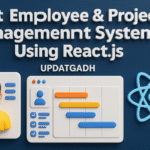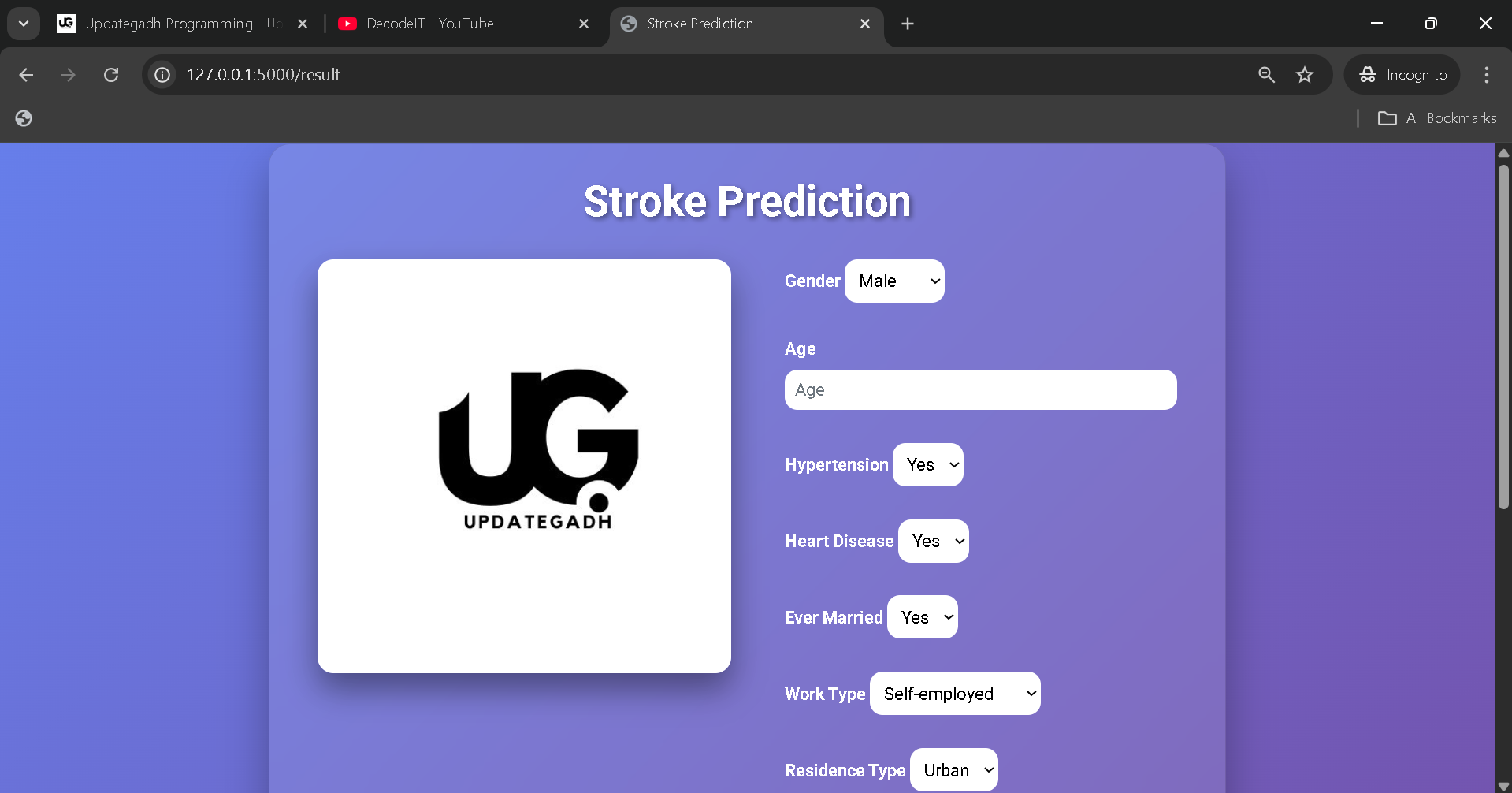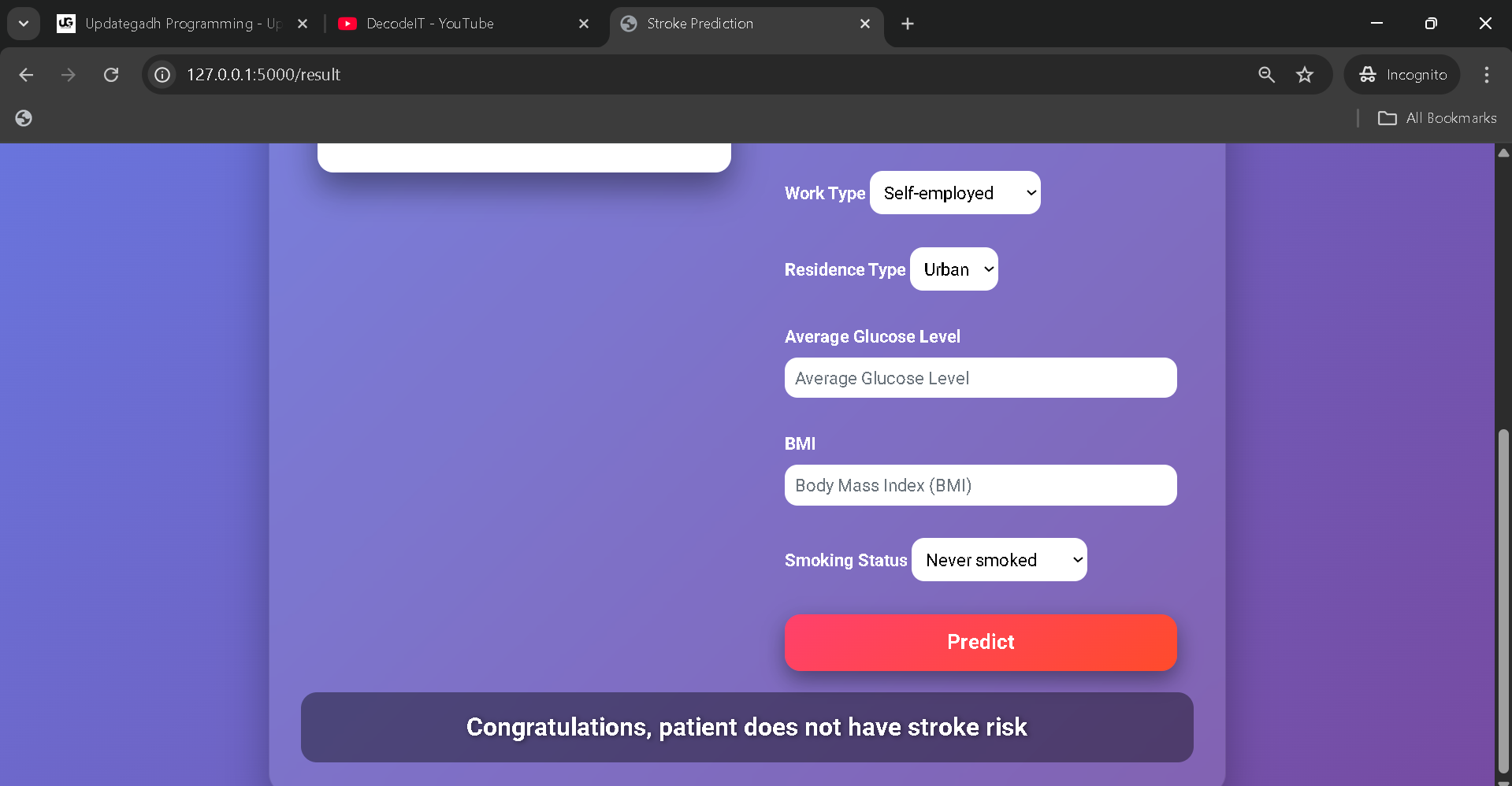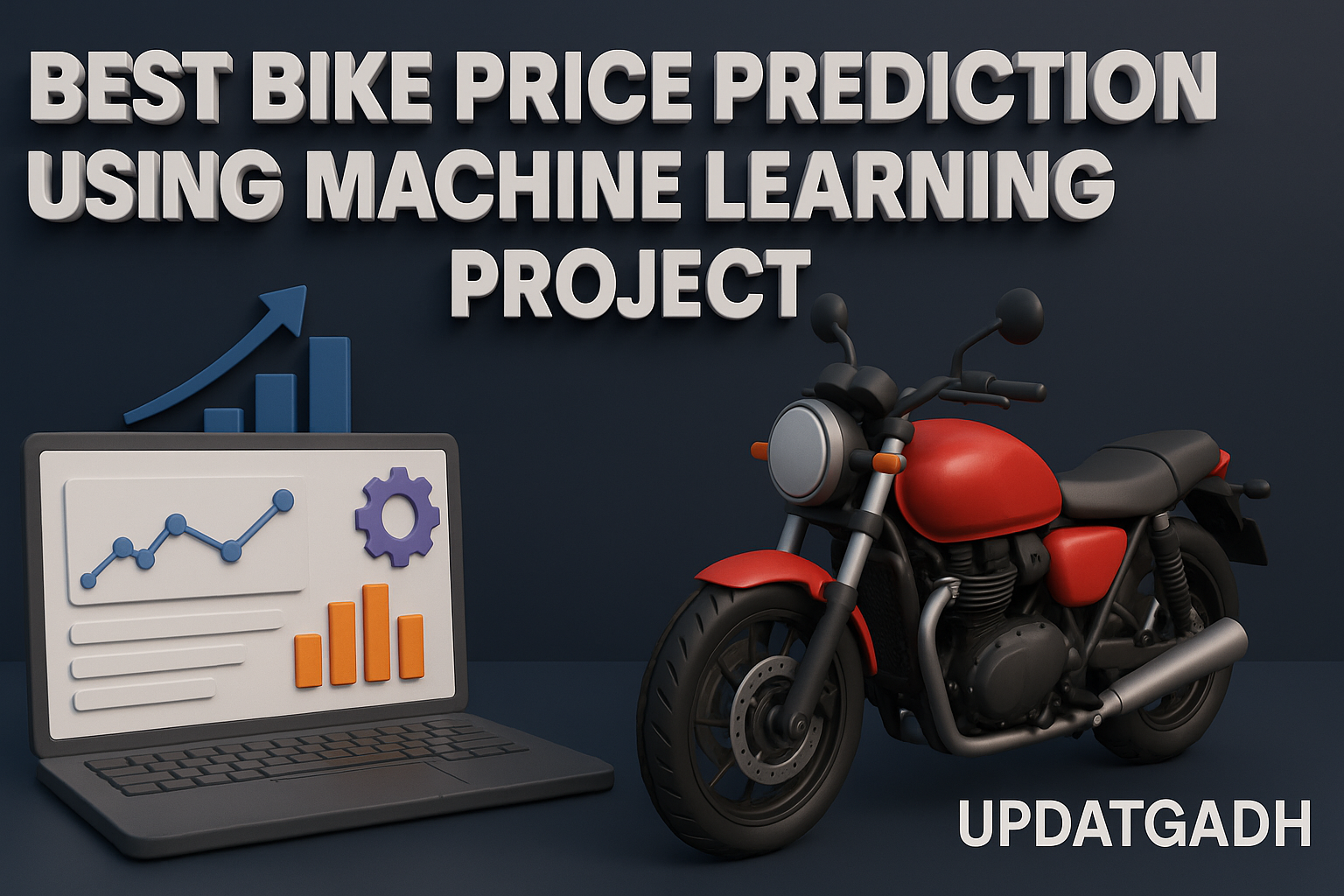
Best Brain Stroke Prediction Using Machine Learning
Brain Stroke Prediction
A simple project on Brain Stroke Prediction was developed to showcase the practical use of machine learning in the healthcare domain. This project predicts the likelihood of a patient experiencing a stroke based on various health-related attributes such as age, gender, hypertension, heart disease, marital status, work type, residence type, average glucose level, BMI, and smoking status. By analyzing these features, the system can provide an early indication of stroke risk, which can be useful for preventive healthcare measures.
The dataset for this project was sourced from Kaggle, containing real-world patient health records. A complete machine learning pipeline was built for this project, covering all essential stages — from data preprocessing to exploratory data analysis (EDA), feature selection, model training, evaluation, and deployment.
This project is particularly valuable for students because it teaches how to handle real-life challenges such as imbalanced datasets, missing values, and categorical feature encoding. It also demonstrates the application of several machine learning models for classification tasks, allowing students to compare performance metrics like accuracy, precision, recall, and F1-score before selecting the best-performing algorithm.
This project provides students with hands-on experience in building a real-world predictive system, combining data science skills, machine learning techniques, and practical healthcare knowledge.
Best Final Year Project For Data Science :–Click Here
Project Overview
| Attribute | Details |
|---|---|
| Project Name | Brain Stroke Prediction |
| Language/s Used | Python |
| Database | Kaggle Stroke Prediction Dataset |
| Type | Machine Learning / Predictive Analysis |
We have Best projects Available in all languages:–Click Here
A simple project on Brain Stroke Prediction comes with a comprehensive set of practical features designed to demonstrate the full machine learning workflow for classification problems in healthcare. These features guide students through each step of the project, from raw data handling to final model evaluation, providing a hands-on learning experience.
Available Features:
- Data Preprocessing: Handles missing values, ensuring a clean dataset suitable for model training. This includes imputing missing BMI values and standardizing other numerical attributes.
- Categorical Feature Transformation: Converts categorical variables into numerical format using techniques like dummy encoding, making the data compatible with machine learning algorithms.
- Dataset Balancing: Applies techniques such as random oversampling to manage imbalanced classes, which is common in healthcare datasets where stroke cases are fewer than non-stroke cases.
- Exploratory Data Analysis (EDA): Visualizes data through histograms, pie charts, box plots, and heatmaps to identify trends, correlations, and feature importance.
- Multiple Machine Learning Models Implemented:
- Decision Tree: Simple and interpretable model for baseline predictions.
- K-Nearest Neighbors (KNN): Classifies patients based on similarity to nearby data points.
- XGBoost: Powerful gradient boosting model for high accuracy predictions.
- Random Forest: Ensemble method chosen as the final model due to robust performance.
- Logistic Regression: Provides a probabilistic approach to classification and baseline comparison.
- Model Evaluation: Measures model performance using confusion matrix, precision, recall, accuracy, F1-score, and ROC-AUC curves to ensure reliable predictions.
- Final Model Selection: Uses k-fold cross-validation to validate the stability and generalizability of the chosen model, ensuring it performs well on unseen data.
These features collectively create a complete end-to-end machine learning pipeline, giving students practical exposure to data preprocessing, feature engineering, model implementation, and evaluation, while emphasizing real-world healthcare application.
Best Advanced Python Projects:-Click Here
Preprocessing Summary
Before training the models, the dataset required careful preprocessing:
- Dropped the
idcolumn because it did not add value to predictions. - Checked for missing values. Only the BMI column had null values, which were imputed using the median since the distribution was skewed.
- Standardized the
gendercolumn — converted the rare “Other” value to the majority group. - Converted binary attributes into categorical string bins for dummy encoding.
- The target attribute (
stroke) was highly imbalanced. Applied random oversampling to balance positive and negative stroke cases.
This preprocessing ensured that the dataset was clean, balanced, and ready for model training.
Exploratory Data Analysis (EDA)
EDA is an essential step to understand the dataset. Several visualizations were generated:
- Histograms & Pie Charts: Showed the distribution of age, BMI, hypertension, heart disease, and smoking status.
- Target Relation Plots: Compared stroke occurrence against age, hypertension, and other attributes.
- Heatmap Correlation Plot: Displayed correlations across features. Interestingly, very few strong correlations existed, making the prediction problem more challenging.
Download New Real Time Projects :–Click here
Model Building
The processed dataset was split into training and testing sets (80–20 ratio). Five machine learning models were tested:
- Decision Tree – Accuracy: 97.89%
- KNN (K-Nearest Neighbors) – Accuracy: 97.22%
- XGBoost – Accuracy: 97.48%
- Random Forest – Accuracy: 99.48%
- Logistic Regression – Accuracy: 76.34%
The Random Forest model achieved the highest accuracy (99.48%) on the test data. To check for overfitting, 20-fold cross-validation was performed, resulting in a reliable average accuracy of 95.01%.
This validation confirmed that Random Forest is the most robust choice for predicting stroke risk in this dataset.
Installation Guide (VS Code)
Follow these steps to set up the project in Visual Studio Code (VS Code):
1. Install Python
Ensure Python 3.8+ is installed. Check using:
python --version
2. Install VS Code
Download and install Visual Studio Code from its official website.
3. Install Required Libraries
Open a terminal in VS Code and run:
pip install -r requirements.txt4. Clone or Extract Project
If you have the project as a zip file, extract it and open the folder in VS Code.
5. Run the Project
Run the main script using:
python main.py
This will preprocess the dataset, train the models, and display evaluation metrics.
Best Final Year Project For Python :- Click Here
Usage
The project is designed for predictive analysis and does not involve role-based access like Donor, Recipient, or Admin. Instead, it follows a structured pipeline:
- Data Analyst/Student: Runs preprocessing, EDA, and modeling steps to learn and interpret results.
- Researcher/Developer: Can extend the project by adding new models or fine-tuning hyperparameters.
- End User (Healthcare Use Case): A trained model can be integrated into a healthcare system to input patient details (age, hypertension, BMI, etc.) and predict the likelihood of a stroke.
Thus, while the current implementation is student-focused, it demonstrates real-world usability in healthcare systems.
Contributing
Contributions are welcome to improve this project. You can:
- Add more advanced preprocessing techniques.
- Implement hyperparameter tuning for existing models.
- Explore deep learning alternatives like neural networks.
- Enhance visualizations for clearer insights.
When contributing, please ensure your code is well-commented and tested.
License
This project is licensed under the MIT License. You are free to use, modify, and distribute the project for educational and research purposes, provided that credit is given to the original developer.
Best Final Year Project For PHP :- Click Here
Final Thoughts
From a student’s perspective, this project has been extremely insightful. It covered almost every stage of a machine learning pipeline — from data cleaning, dealing with imbalance, visualization, and training multiple models to validating results with k-fold cross-validation.
The biggest takeaway is learning how to handle imbalanced datasets, which is very common in real-life healthcare scenarios where positive cases (like stroke occurrence) are rare. By applying oversampling and validating with cross-validation, the project demonstrates how to build reliable and practical predictive models.
In real-world applications, such a system could be used by hospitals or clinics to identify high-risk patients early, enabling preventive measures and potentially saving lives. For students, this project is a perfect mix of theoretical learning and practical implementation.
Best Final Year Project For JAVA :- Click Here
brain stroke prediction using machine learning project report
brain-stroke prediction using machine learning github
brain stroke prediction using machine learning research paper
brain stroke prediction using machine learning ppt
brain-stroke-prediction github
brain stroke prediction using deep learning
brain stroke prediction project
brain stroke prediction dataset
brain stroke prediction using machine learning pdf
brain stroke prediction using machine learning 2022
brain stroke prediction using machine learning algorithm











Post Comment